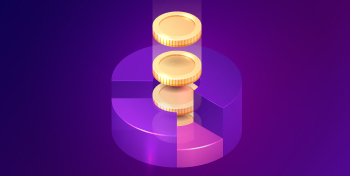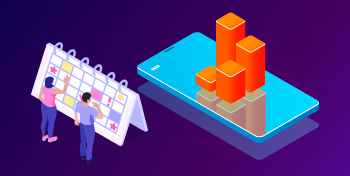The crypto asset, which has brought with it revolutionary changes in the world of payments and financial freedom to people, has been the object of desire of forces that want full control over the asset since its inception. So who are they?
The company and the stock exchange: they stimulate the market or control it?
The emergence of stores and exchanges in the ecosystem was a breakthrough. With them, Bitcoin began to gain relevance as a currency: exchange profits, spending on products and services – this is the Bitcoin boom. No one can deny that it was merchants and exchanges that allowed the development of the BTC to accelerate significantly, and reach hundreds of millions of people.
But many companies work solely for the sake of money. They don’t seek to educate people, transfer Bitcoin to people, and even sometimes it’s just another product that they may have criticized in the past. At this stage, we see institutions and companies. Names like Paypal, BBVA, JP Morgan, and many others who have invested in the destruction of Bitcoin are now looking to profit from it.
Many other companies are in the cryptocurrency world not only to make money, but also to support the project, provide a budget to developers (who, by the way, do not use code) and create a richer ecosystem for everyone.
But we should not forget that the first category of companies, on the other hand, definitely support opportunism and try to get their share of the” mining ” of the cryptocurrency world, and try to massively manipulate the way cryptocurrencies are perceived.
The actions of some and others obviously affect the system, and they all advocate implementing features that help improve their presence or technical capabilities in Bitcoin.
For example, Blockstream is a well-known company in the Bitcoin ecosystem. The salaries of various BTC developers depend on it. It also requires significant funds to support the development of Bitcoin, the development of new technologies, and much more. But in some cases, the crypto community has denounced Blockstream, accusing it of trying to pull the strings of Bitcoin’s development in its favor, and in favor of its investors. Another thing that it is always criticized for is its patent system, which is contrary to the spirit of free Bitcoin software, and which Blockstream has implemented as a common phenomenon.
On the other hand, Craig Wright’s nChain is called the troll company. Nonproprietary inventions made by the crypto community have been patented by this company. Even the BTC itself and its entire system were patented by this company in an attempt by its creator to gain fame in the ecosystem.
On the other hand, there are exchanges whose enormous economic power can change the situation in the ecosystem. For example, OKEx and CEX credited Monero (XMR) on their exchanges, and with its help, reduced the price of the cryptocurrency. This is eloquent evidence of the huge opportunities that exchanges have to control the value of cryptocurrencies, as they help the currency reach more people.
If this is true, the market rules govern cryptocurrencies and their value, but the exchange can manipulate this price at will to make a profit. Decisions about which currency to list or not, or even which version of the node to use, have a very big impact on the cryptocurrency. The same thing happens with BTC.
However, there are many exchanges, and free competition means that exchanges must adapt to what users ask for, because an exchange that does not satisfy the wishes of its customers will not last long.
The movement of whales creates cataclysms
Bitcoin whales are another powerful faction in the crypto world, and their strength lies in the fact that they are rich, very rich, so insanely rich that many exchanges can’t even compete with them. For example, the address:
35hK24tcLEWcgNA4JxpvbkNkoAcDGqQPsP
This is a well-known address of the Huobi exchange, and it currently has a total of 141,451,59463747 BTC.
What can a whale do with that amount of money in Bitcoin? Well, any of his actions will significantly affect the price of BTC, and with it, the cryptocurrency markets around the world. Wherever it goes, you will feel the effects of it, as it will show up on the cost. In fact, many people agree that the 2017 bull market was the work of a group of whales who managed to push the price up to $ 20. This shows us the immense power of these whales in the Bitcoin world.
Something interesting has been noticed, as some whales are the founders of other cryptocurrencies. Cryptocurrencies such as USDT or XRP. They were repeatedly accused of using their cryptocurrency to enrich themselves, of being able to freely issue a huge number of new currencies, and then buy Bitcoin with their help. There is no doubt that the charges that we will see in the future will eventually end, but this is another important point of control.
The crypto community

Finally, we look at the crypto community around Bitcoin, and if we can say anything about it, it’s that an important part of it is formed in the world of cryptography. This is understandable, Bitcoin is the oldest project, and its community is the most mature, so many people understand the project and its philosophy well.
The problem is that sometimes what the project participants understand can be very different between people (which is normal), and sometimes it can completely contradict the principles and interests of the project itself. Be that as it may, the Bitcoin community is a huge crowd of critical thinkers, attentive to what is happening in the Bitcoin world, and who do not hesitate to make themselves known when they do not like something.
The community usually consists of developers, companies that come into the business, regulators, and so on. In short, it is a gathering of people who are always eager to defend the project they believe in. But just as they protect, they can also destroy it.
While this may sound harsh, the crypto community sometimes proves to be the fuel needed to sow the chaos many need to carry out their plans. An example is Bitcoin, Bitcoin Cash, and Bitcoin Cash SV. But another more recent move with Steemit, TRON, and Binance. The target community went so far as to share a huge project (Steemit), responding to what Justin Sun and Changpeng Zhao said. The power of the crypto community is enormous, especially because it is what consumes, what participates in the markets, and what ultimately shapes most of the market dynamics. And this is a huge power of control. Is the crypto community decentralized? Yes, but with great power. It is a power that many seek to use to their advantage.
The balance of all forces is in balance

Now that you know which major forces are fighting for control of Bitcoin and how each of them can manage their presence in the ecosystem, you’ll probably think, ” Bitcoin is a disaster full of manipulation.” The truth is, to some extent, it is true. Because as long as all these forces exist, no one can fully control Bitcoin. There is no power that can say, “I am in full control of Bitcoin” (at least, as long as nothing is said about it). The truth is that they all have their own mercantile goals.
And this can be explained with the help of a simple law applicable in the world of physics, the well-known First Law of Newton, which in a simplified form states the following:
“The sum of all forces applied to an object is zero, reaching a state of equilibrium.”
If we extrapolate these words of Newton and take them to ourselves, we can say that:
“All the forces that seek to control Bitcoin are such that their totality creates an equilibrium.”
What we can clearly see in the well-known game theory is the Nash equilibrium.
And this is as clear as any physical or mathematical formulation. For example, do you remember that in the beginning we talked about how Gavin Andresen tried to force changes to the PTS code in order to satisfy his interests? This is the control of the developer in full swing. The crypto community, other developers, miners, and other forces, on the contrary, opposed it. As a result, no changes were made, and Gavin Andresen lost his position as lead developer.
Another good example that we see in the hard fork of Bitcoin and Bitcoin Cash. The hard fork was carried out under such conditions that in itself could have disastrous consequences for both BTC and developers. And the Bitcoin Cash community didn’t care. However, crypto exchanges, miners, the crypto community, and developers did their best to make the event as less disruptive as possible. As a result, the hard fork went smoothly, and Bitcoin continued on its way. Once again, the power reached the entire balance.
When a whale moves its BTC to sell, the price drops quickly. But the market and the community quickly counteract this, and seek to bring the price to a new level of equilibrium, where common interests converge.
Even what Satoshi Nakamoto did, putting Bitcoin under a free software license as liberal as MIT, is an early reflection of this balance. The MIT license allows Bitcoin to always be free software, it allows it to be a public or private development, a development that everyone can benefit from. Because the goal is simple: it leads the world to an era of decentralization, an era when the forces that act to control (governments, banks, international organizations)find a balance with us, building an analog.
Now you can understand that Bitcoin is not controlled by anyone, but is always looking for a balance between all its participants. For now, this is the truth about Bitcoin, and you can see it daily and everywhere.


